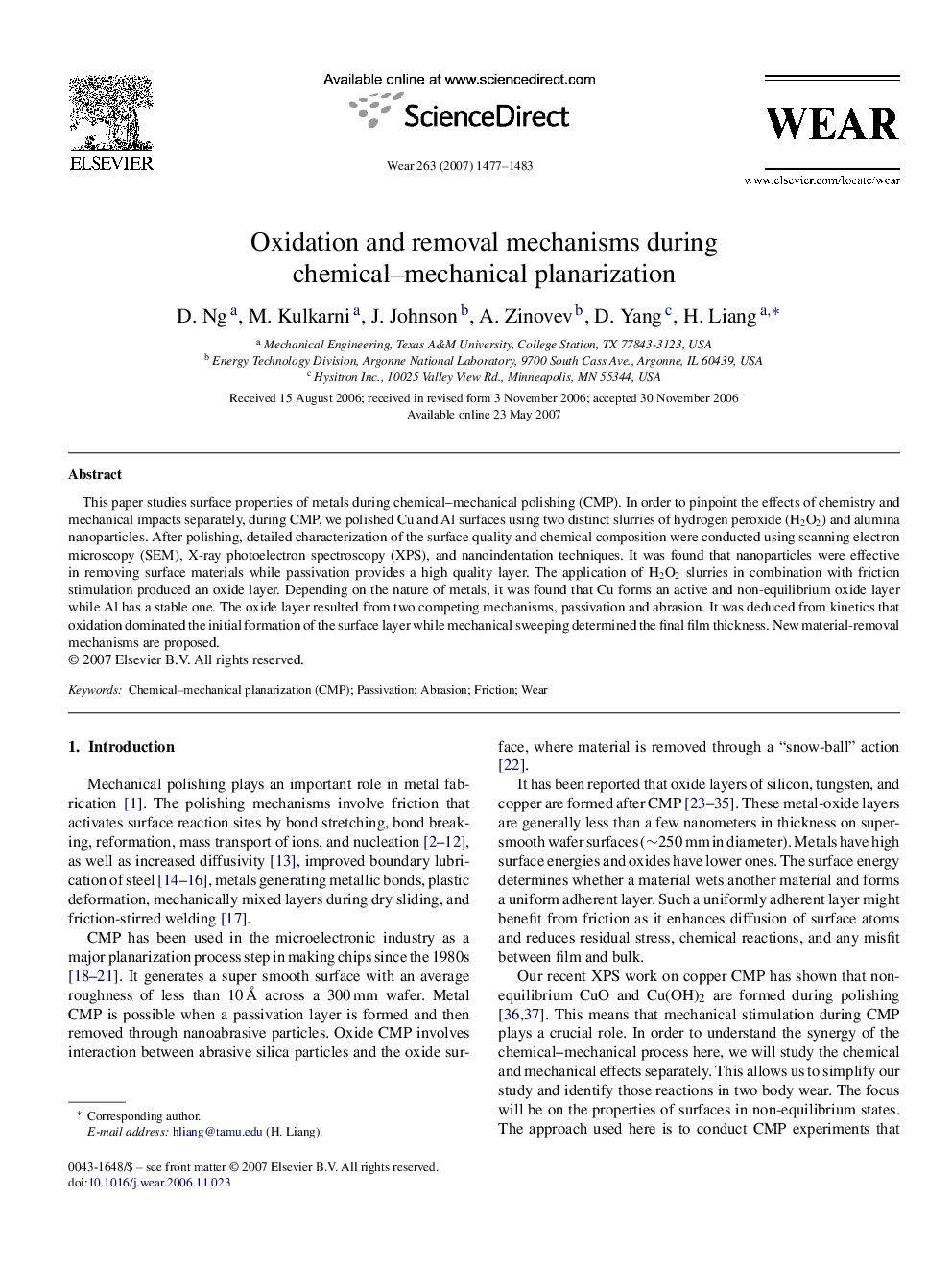| Article ID | Journal | Published Year | Pages | File Type |
|---|---|---|---|---|
| 620050 | Wear | 2007 | 7 Pages |
Abstract
This paper studies surface properties of metals during chemical-mechanical polishing (CMP). In order to pinpoint the effects of chemistry and mechanical impacts separately, during CMP, we polished Cu and Al surfaces using two distinct slurries of hydrogen peroxide (H2O2) and alumina nanoparticles. After polishing, detailed characterization of the surface quality and chemical composition were conducted using scanning electron microscopy (SEM), X-ray photoelectron spectroscopy (XPS), and nanoindentation techniques. It was found that nanoparticles were effective in removing surface materials while passivation provides a high quality layer. The application of H2O2 slurries in combination with friction stimulation produced an oxide layer. Depending on the nature of metals, it was found that Cu forms an active and non-equilibrium oxide layer while Al has a stable one. The oxide layer resulted from two competing mechanisms, passivation and abrasion. It was deduced from kinetics that oxidation dominated the initial formation of the surface layer while mechanical sweeping determined the final film thickness. New material-removal mechanisms are proposed.
Keywords
Related Topics
Physical Sciences and Engineering
Chemical Engineering
Colloid and Surface Chemistry
Authors
D. Ng, M. Kulkarni, J. Johnson, A. Zinovev, D. Yang, H. Liang,
